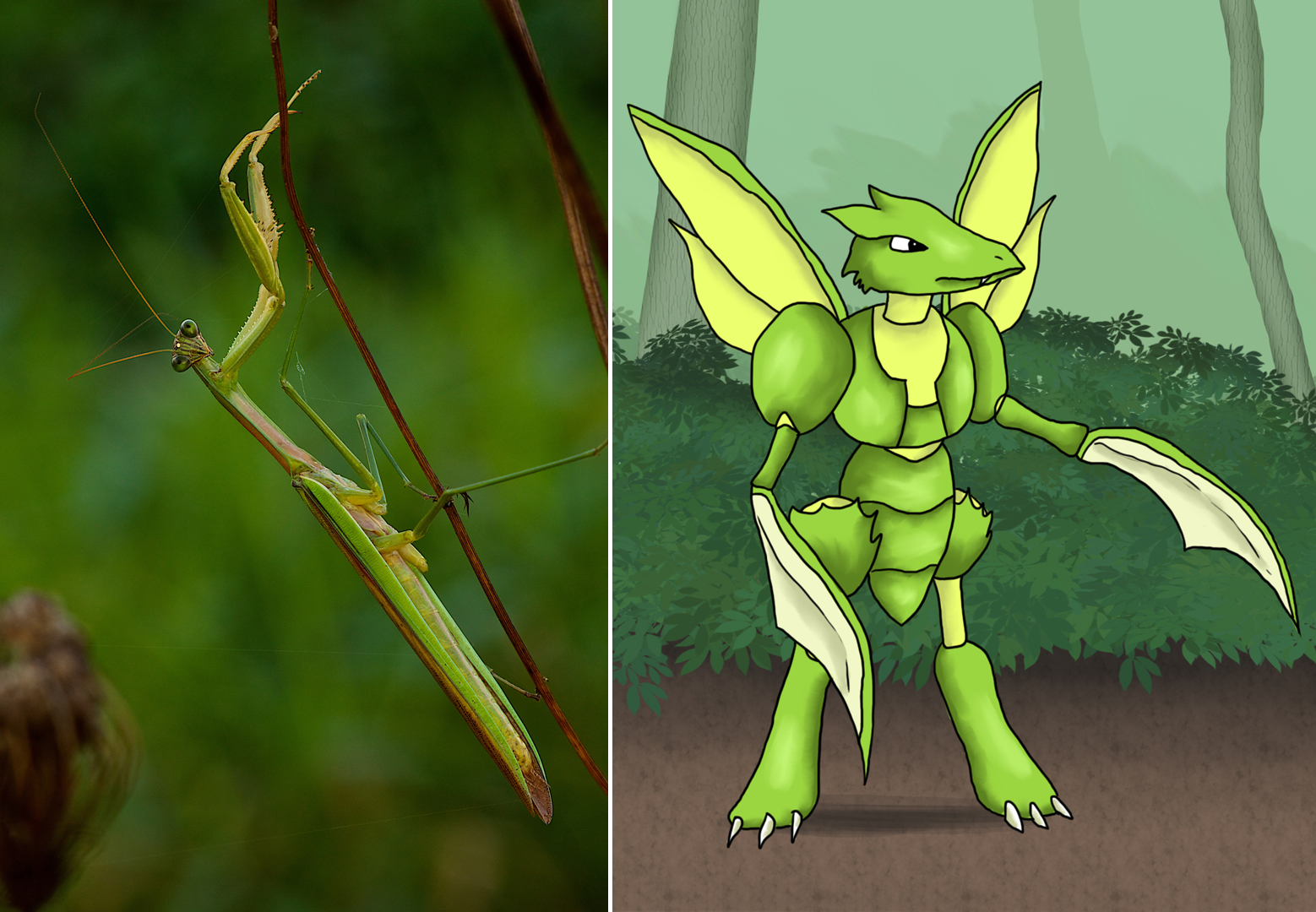
The mobile game Pokémon Go made a big impact on us at Highbanks last year. We had approximately 400,000 additional visitors to the park compared to 2015, and a big part of that increase was people coming to Highbanks in order to play the game. Visitors arrived at Highbanks from all over Ohio, and some even made trips from Indiana, Michigan, and Illinois so they could catch the rare Charmanders, which we had in abundance. While we were happy to see so many new faces, we hoped that they would occasionally look up from their phones and enjoy the natural wonders surrounding them.
In order to engage these new visitors, we naturalists attempted to make connections between the game’s creatures and the real animals that inspired them. As we learned about the game, we passed our knowledge on to the players, helping them to connect to the natural history of Ohio and the rest of the world. Though they may seem otherworldly, many Pokémon are based on real animals or plants.
Bulbasaur
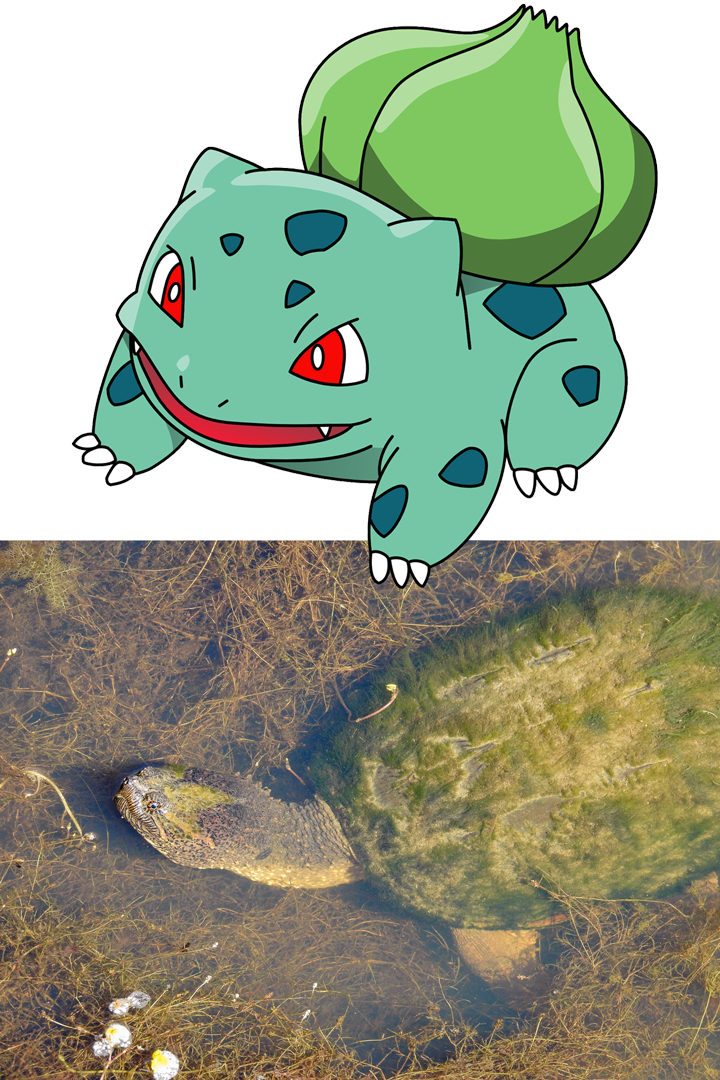
Number one on the list of all Pokémon discovered so far, Bulbasaur is a combination of plant and animal. It appears to be some sort of frog with a budding leaf attached to its back. As it evolves, the creature becomes more fearsome and the plant blooms into an enormous flower in its final form.
In nature, though, this sort of relationship between plant and animal is very rare. Think about what a plant needs to survive: water, sunlight, and soil. Most animals can’t supply all of these things to a plant that happens to sprout on its back. In addition, few animals will tolerate a plant’s roots digging into its skin.
However, there are a few examples of this sort of scenario existing on Earth. Algae, which are technically not plants but do perform photosynthesis, are found on some slow-moving animals that live in wet or humid environments, like turtles and sloths. Algae have also been found living inside the cells of spotted salamanders, the only known example of such a relationship.
In order to find an actual plant growing on an animal, you must look very closely at some very small animals. In certain rainforests in Africa and southeast Asia, conditions are so humid that mosses seemingly grow on every surface. They have even been found growing on the backs of weevils (a type of beetle with a snout), and on the shells of living snails. Since mosses absorb water and nutrients through their leaves, their primitive roots do not harm the animal. The moss has a place to grow, and the animal gains some convincing camouflage. Within the moss, tiny mites have been found, which could be the method by which the plants are transported to new animal hosts. Check out a fantastic example of this phenomenon on Flickr
Charmander
Charmander, as its name suggests, owes much of its origin to the salamander. However, it does not share many traits with the real salamanders you can find in the local forests and vernal pools. Rather, it bears the most resemblance to the mythological salamander, a lizard known to inhabit flames and extract energy from them. Several famous naturalists, including Aristotle, Pliny the Elder, and Leonardo da Vinci, were convinced that salamanders were furry (or scaly), heat-loving creatures that could kill thousands of people by swimming in their drinking water. This was apparently back when being a naturalist meant that you made up stuff about animals you had never seen and everybody believed you.
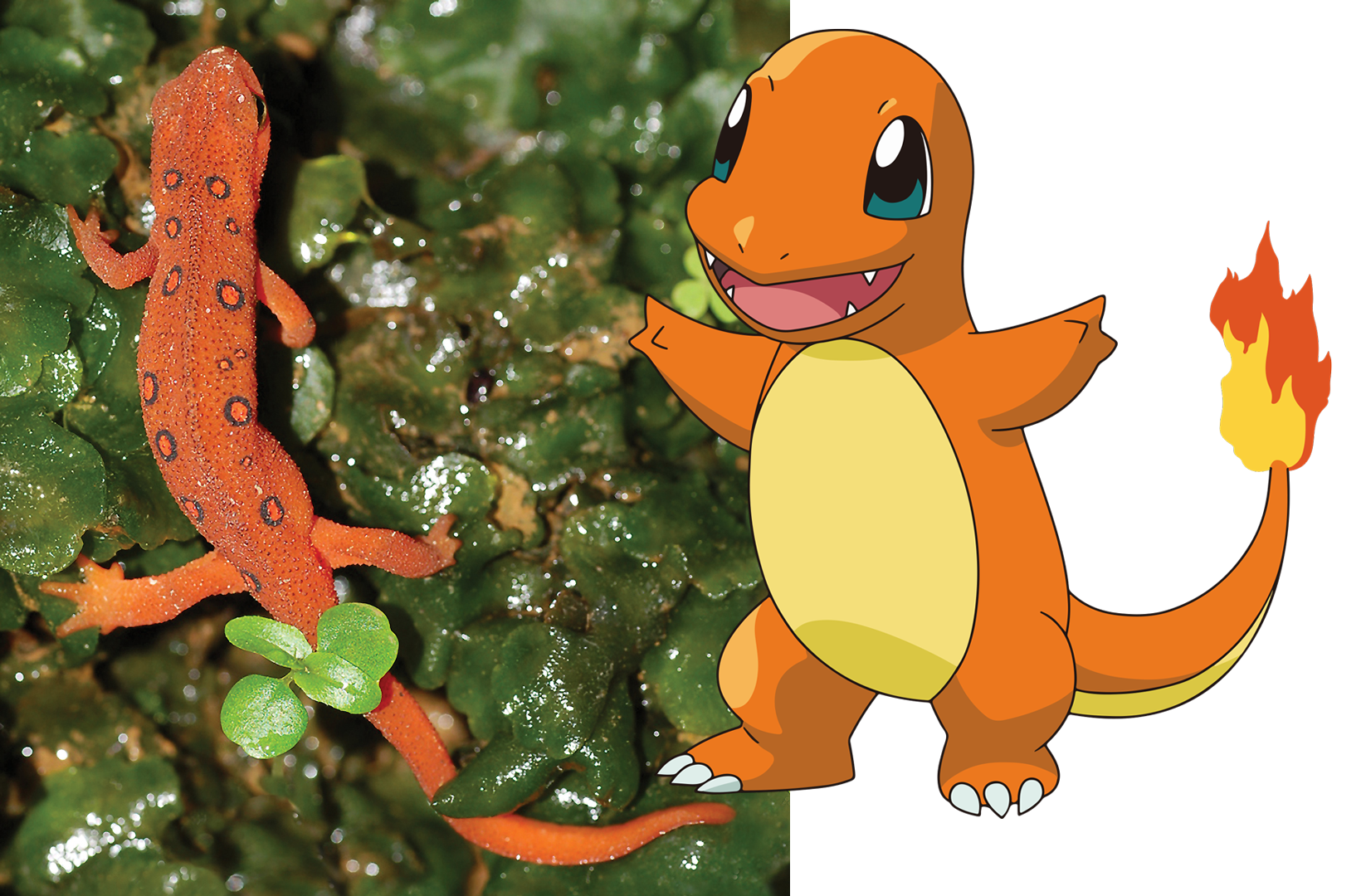
Real salamanders are smooth, moisture-craving amphibians that cannot survive in dry environments. Their thin skin offers no protection from fire. Most of them are poisonous, but only a few produce strong enough toxins to harm a human. Even then, you would have to swallow one for it to cause any permanent damage. Several species in Ohio, like the spotted salamander and tiger salamander, are brightly colored, warning predators of their distastefulness. One, the red eft stage of the red-spotted newt, looks just like a tiny Charmander, minus the flaming tail. This species produces tetrodotoxin, the same poison found in pufferfish, blue-ringed octopus, and other highly toxic animals. You will often see red-spotted newts living happily alongside predatory fish like bluegill and largemouth bass, since the fish know to leave the poisonous amphibians alone.
Squirtle
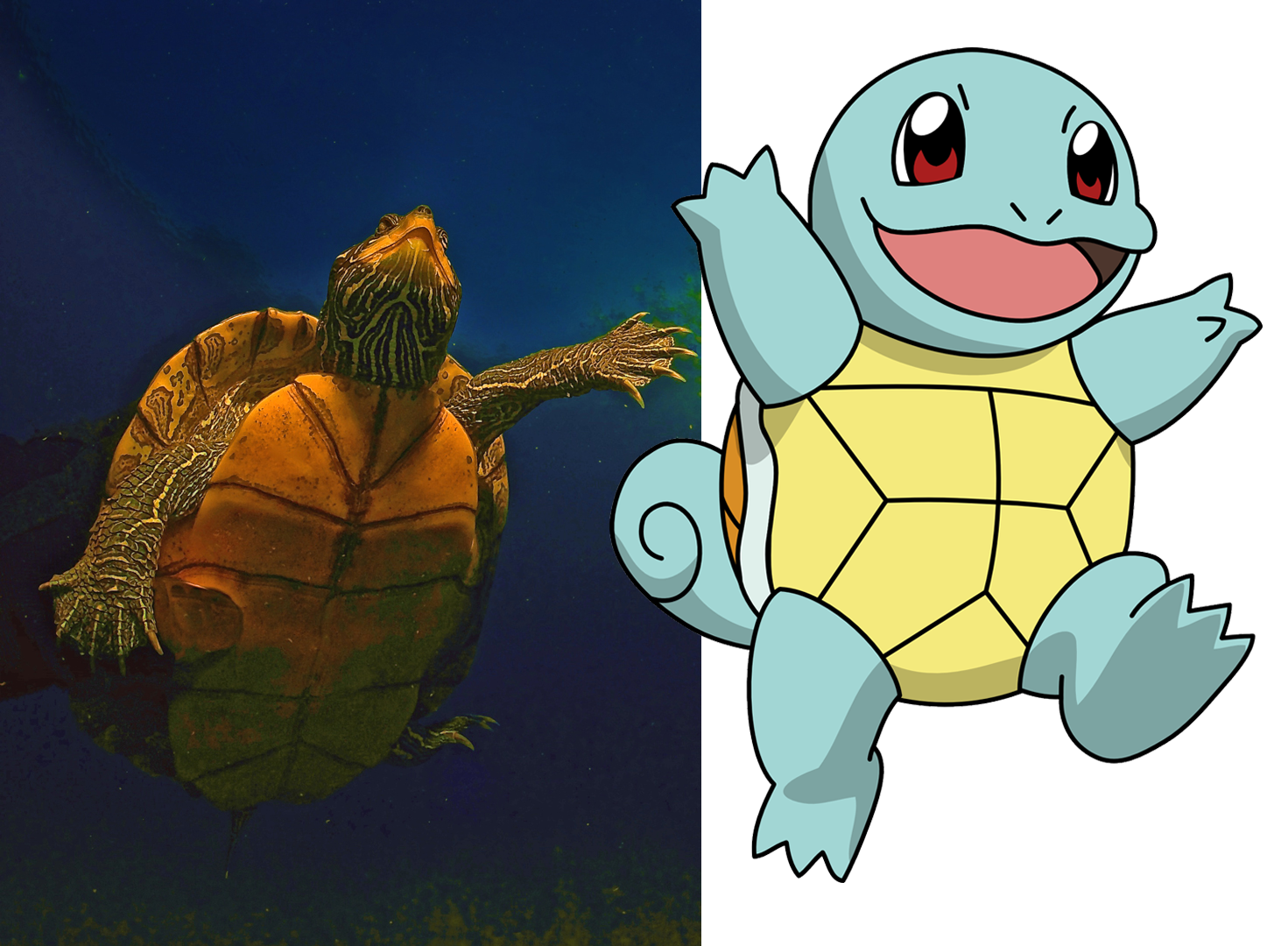
Squirtle is clearly based on an aquatic turtle, though there don’t seem to be any in nature that are actually blue. There are several species of aquatic turtle found in your Metro Parks, including red-eared sliders, painted turtles, spiny softshells, and common snapping turtles. Though these turtles are able to survive on land, they spend most of their time in and around water, only wandering away in order to find nesting sites. Being ectothermic (cold-blooded), they acquire most of their energy from the heat of the sun, and so are less active in winter. When temperatures drop in the fall, turtles will swim to the bottom of a pond or river and spend the winter under the ice. You can sometimes see them swimming around even when the ice covers the surface. The cold water slows their energy consumption and their oxygen needs are greatly reduced. They have several methods of staying alive under ice, but once the water warms up, they must have access to the surface or they will drown.
Squirtle’s evolution, Wartortle, looks similar to its predecessor, but with the addition of two long ears and an extended tail. This creature takes oxygen with it underwater, as its ears and tail are covered in very short fur. The fur catches a thin layer of air, which forms a bubble, so the Pokémon can breathe while underwater. Though no real turtles have fur, there are many aquatic invertebrates that use this method as a sort of SCUBA tank. Diving beetles, water scavenger beetles, water spiders, water boatmen, backswimmers, and others all use this method. They eventually do go back to the surface for more air, but they are able to stay underwater much longer than they would without their “bubble-lung.”
Pikachu
No discussion about Pokémon is complete without mentioning Pikachu, the most famous of all the “pocket monsters.” This yellow critter is so recognizable, a balloon version of it has appeared in the Macy’s Thanksgiving Day Parade since 2001. It has a vaguely rabbit-like appearance, but has a lightning-shaped tail to indicate its electrical powers.
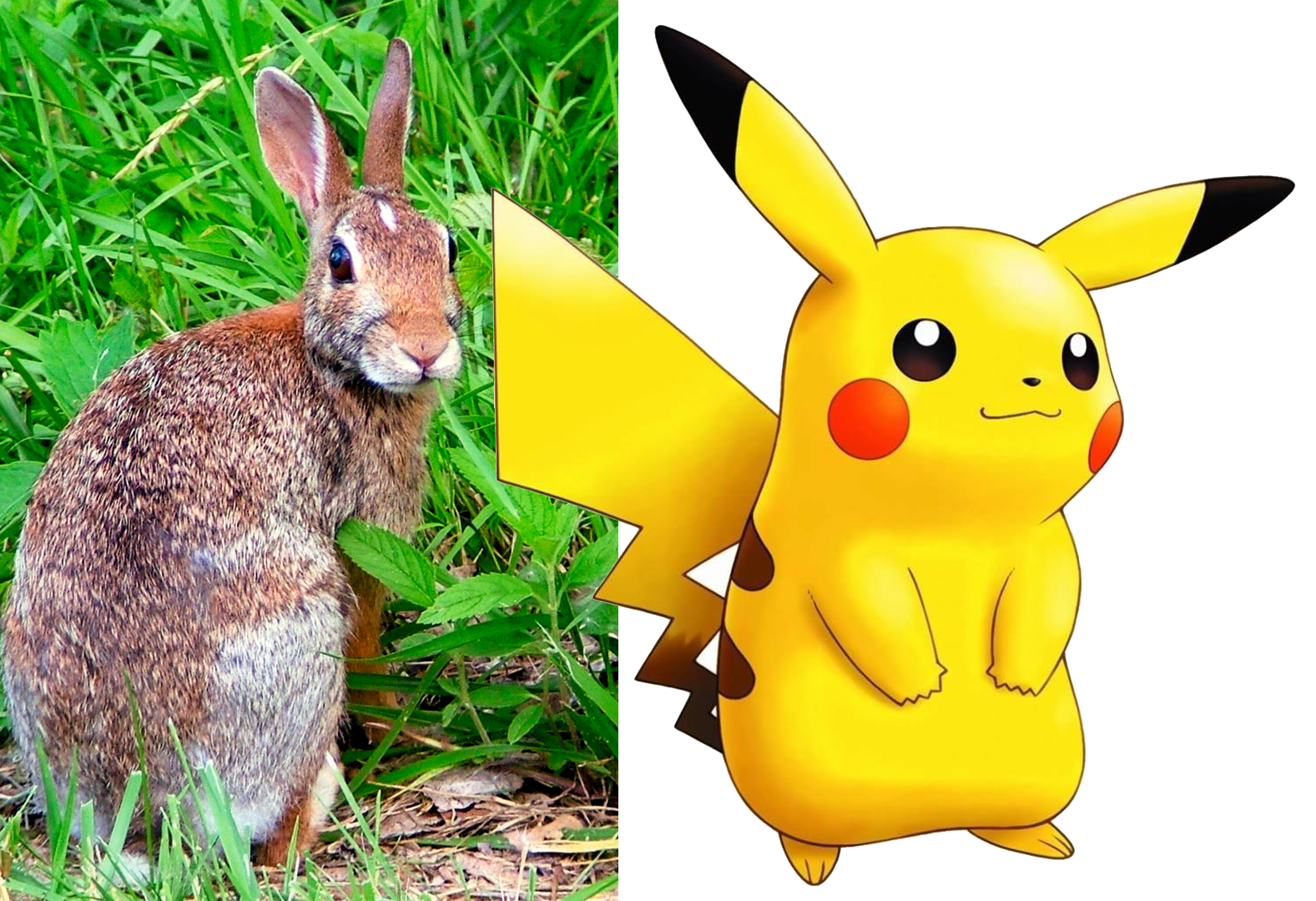
The pika, a mammal in the same group as rabbits, bears a superficial resemblance to Pikachu, though the connection appears to be coincidental; in Japanese, pikapika means “sparkle,” and chuchu is the sound of squeaking. There are many species of pika (pronounced “PY-kuh”) throughout the northern hemisphere. They are all small, rabbit-like creatures with short ears. They do not control electricity.
A few animals can, though. The most well-known of these is the electric eel, but there are also electric rays and electric catfish. These fish can use electric pulses to both stun prey and impede predators. They use special organs called electrocytes, which are similar in form to an electric battery, to create the charge. Electric eels can produce up to 860 volts in short bursts, which is not enough to kill an adult human, but has been likened to the shock of a stun gun. You wouldn’t be able to see the electricity in the form of a lightning bolt, but you would definitely feel it.
… And All The Rest
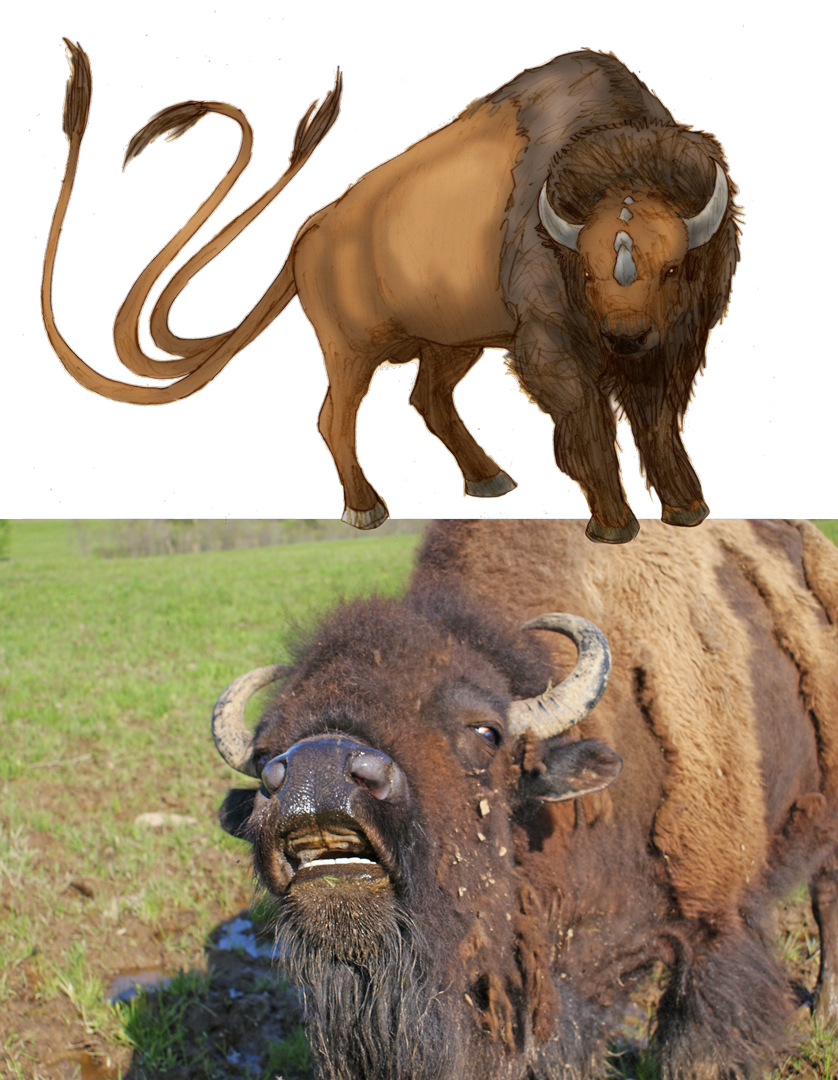
To date, there are 802 Pokémon, and many of those are inspired by real animals and plants. If you enjoy playing Pokémon Go, I encourage you to keep an eye out for some of Ohio’s living creatures as you search for Pokémon in the parks. As the weather warms up, you may notice a snail with some algae on its shell, or a salamander in a vernal pool. Look in the river and you could see a turtle sunning itself or a beetle with a shiny bubble on its belly. Watch for stag beetles and mantises, the models for Pinsir and Scyther, or go to Battelle Darby Creek to see the American bison, the inspiration for Tauros. Real versions of Venomoth, Caterpie, Paras, and Poliwag can be found at all of your Metro Parks, if you take the time to look. Just remember, if you Gotta Catch ‘em All, please put them back where you found them.
CRAIG BIEGLER
Highbanks Naturalist
